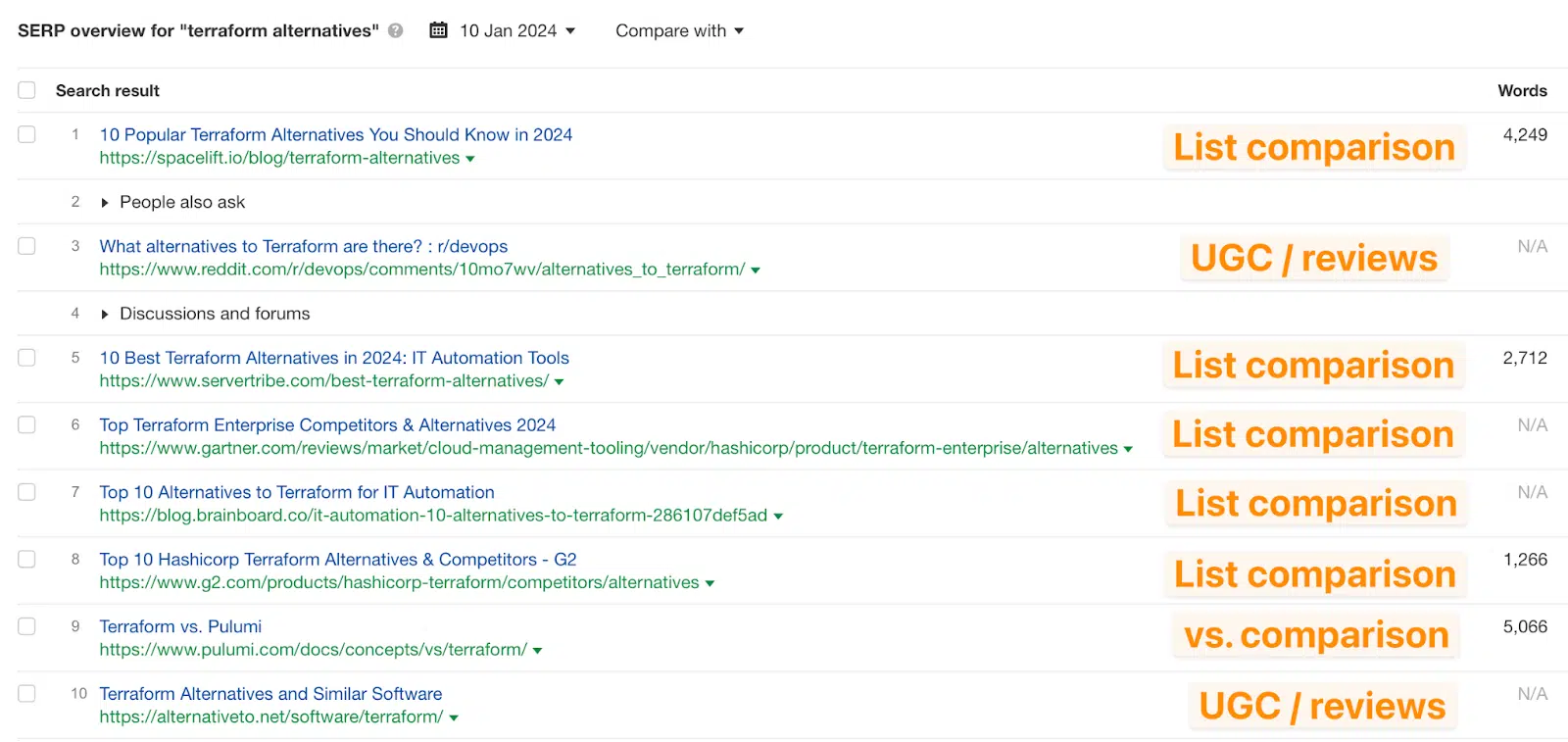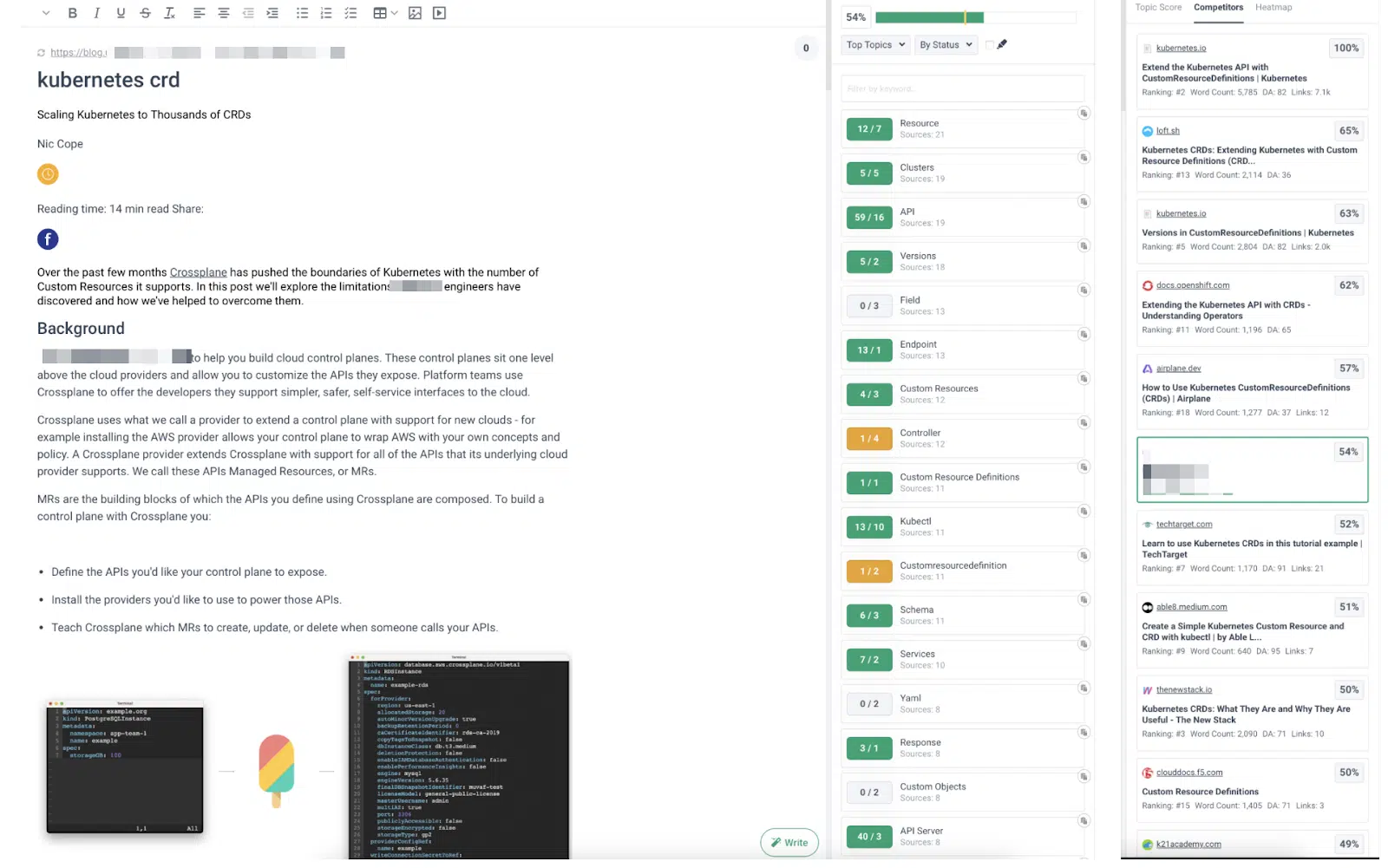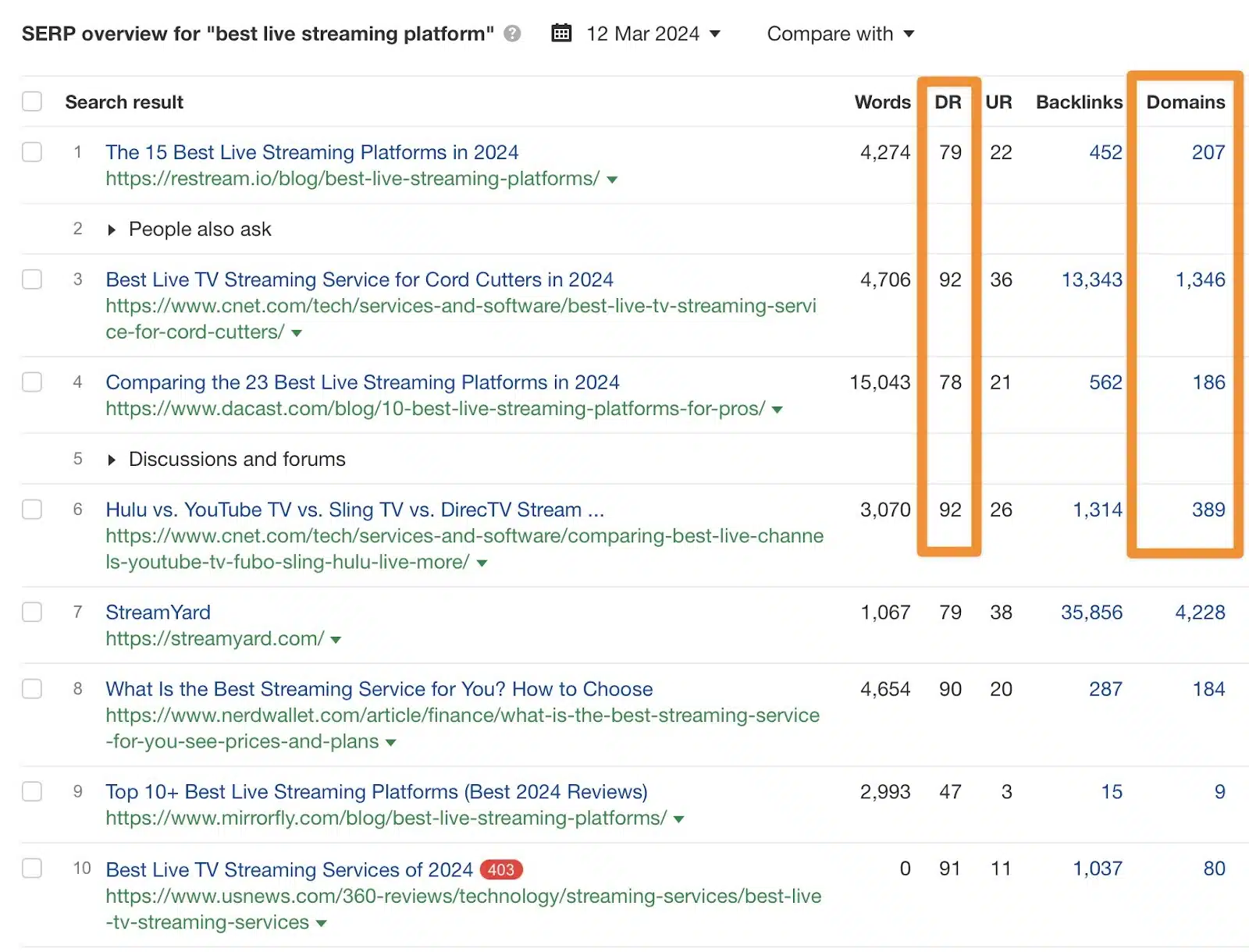[ad_1]
Your ‘pretty good’ rankings look pretty good.
But they aren’t. At least, not if you dig a little beneath the surface.
You’ll soon realize that the “pretty good” ranking is actually more of a mirage, an oasis in a sea of fierce competition, which means you probably won’t, if ever, drink from the firehose of traffic you so desperately crave you are missing.
Here’s how to figure out whether your “pretty good” rankings are likely to increase sales soon, or whether you need to fix some short-term pain to get the long-term ROI you deserve.
Problem 1: Top 10 is not good enough – top ~3-5 should be minimum
View your current organic keyword rankings. And look at all these “pretty good” rankings you get for the highly relevant keywords you search.
Looks pretty good at first glance, right?
Achieving a few top 10 rankings and then more top 20 to 30 rankings should bode well for the future.
The key word in the last sentence is ‘must’.
Let’s take another look, expand the list, and then try to focus what you don’t see.
Give up?
No top five rankings!
But why is this bad?
Two reasons:
- This indicates one lack of actual authority. You could argue that many top 20-30 rankings bode well for the future. However, without actual authority, you will always face an uphill battle to deliver the long-term ROI you need to justify all the time, effort and expense it realistically takes.
- The second problem comes down to organic click-through rates. On average, the top five achieve positions ~70-80% of all clicks. This means that if you get stuck ranking outside the top five, you may only get a fraction of the clicks you actually need to acquire more customers.
A place in the top 10 is a good start.
But it’s not good enough, because position 10 probably gets the same bit of traffic as position 20, 30, or 100+ – which is zero.
And that’s a bad sign – especially when combined with the next few problems.
Problem 2: Your “good” content doesn’t actually match what searchers actually want.
Big brands catch all the breaks.
They can publish mediocre content on their massive site and usually do it ‘pretty well’.
Everyone else? Can not. This is why.
Let’s take another random SERP example.
Let’s say your current page is an opinion article, a how-to, or even a landing page.
Now let’s take a look at the actual content types currently ranked:


Oh oh! Your article might be well written by real subject matter experts. (None of that Surface level AI waste).
It can be full of the technical babble that your ICPs love.
But it won’t be as it is! Not likely and not that soon.
So while it may be “good enough” for the top 20 right now, that is in no way a guarantee that it will ever see the coveted positions 3-5 that actually produce 80%+ of results for this keyword.
Problem 3: Keyword cannibalization means that on-page optimization is also disabled
Analyze underperforming content with a balanced scorecard will immediately make some of these problems clearer.
Because if you have no current authority (little to no top five rankings) and have issues with search intent and content mismatches, you often also see keyword cannibalization (or “pretty good” rankings for a relevant keyword that makes it seem like you are on the right track, but will almost always hold you back in the long run).
This is a bad sign.
Because in general:
- When you write one piece of content and optimize it for a specific keyword or topic.
- You (should) cover semantically related subtopics, related questions, and additional content types (images or video) specific to those keywords or topics.
So even if one piece of content scores multiple “pretty good” keywords, it’s very unlikely you’ll ever rank well enough (top five) for those additional keywords. (Unless you see a lot of SERP overlap.)
The easiest way to spot this problem is when you see a good, in-depth article that is well optimized for the primary keyword target and yet poorly optimized for the secondary or tertiary audiences you are now cannibalizing.
In other words, this:


Great content, on-page optimization and search intent alignment for one keyword.
Still, double-checking the on-page optimization for the secondary cannibalized keywords makes this content seem ordinary in comparison.
There are many missing “top topics” or semantically related concepts that should be covered in this article.
And overall an ‘average’ optimization compared to the competitors, which will almost always remain higher in the rankings if this problem is not addressed.
These three issues covered so far are very common, but focus almost exclusively on how well you do keyword research and content strategy.
In other words, all factors are 100% within your control and are already on your own site.
And yet we haven’t even mentioned the off-site power issues!
Get the daily newsletter marketers trust.
Problem 4: Your competition is incredibly fierce
Keyword problems (KD) is at best a biased, incomplete measure – and at worst a completely misleading or mendacious measure.
Look it up in almost any keyword research tool. What you see is not a true measure of competitors’ content quality or domain strength, but primarily the number of referring domains to each content page that ranks in the top 10.
This is a huge problem because you will see false positives.
You will be tempted to select a keyword or topic because the “KD” says “easy” or “low” when it is anything but that.
Take a look at the screenshot below for one of these ‘lower KD’ keywords and now parse the number of referring domains based on the actual brand and domain strength of the current top 10:


A summary of the screenshot above illustrates:
- Crazy strong power at domain level.
- Strong page-level strength (dozens to hundreds of high-quality links to each piece of content).
- Giant brand names (Gartner, HBR, BCG, McKinsey).
I mean, come on. It should be clear right away.
Search is a zero-sum game. For you to win, others must lose. That means you have to dethrone these competitors. (See “Problem 1” above.)
And what are the chances of doing just that, on this SERP, with these competitors? Especially if you are not already a gigantic brand (leader in the household category + DR 90+)?
Slim to none. Or almost impossible.
Either way, it’s a terrible SERP to compete for for most mortal brands.
And yet, we’re still not done unpacking this SERP competition angle.
Problem 5: The quality and quantity of referring domains are out of your control
Now let’s put all these problems together.
There is usually no one reason why you are not in the top five. There are many that are used for the same keyword and content match you are trying to improve.
And that all becomes a lot more challenging when we’re faced with an arms race in referral domains.
The SEO Most people don’t want to recognize that the top converting keywords on the Internet (i.e., the keywords that generate the most revenue for your business) are also the most competitive and difficult to rank (i.e., which means it will be a bigger investment and it will take longer to show meaningful results).
Let’s look at an example again to visualize these problems:


The brands are big, the domain ratings are high and the content is good and well-tailored to search results.
Likewise, the quality and quantity of referring domains in the top five are also extremely strong.
This means that in an ideal world you would need:
And all before you’ve ever written a single word on this topic!
Otherwise, you’re just setting yourself up for failure (or at the very least, months to years of waiting and being yelled at by bosses, investors, spouses, and more).
Don’t settle for mediocre rankings
“Pretty good” rankings are just that. They are a good starting point.
But they are not always a good sign that:
- You’re on the right track.
- Your SEO+ content strategy will work in the long term.
- It still doesn’t take much distribution to get results quickly.
Pretty good rankings are like a mirage.
They seem nice on the surface. She could be be a good sign.
Or they may even point to deeper problems that will sacrifice results for months and years to come if not resolved as soon as possible.
The opinions expressed in this article are those of the guest author and not necessarily those of Search Engine Land. Staff authors are credited here.
[ad_2]



